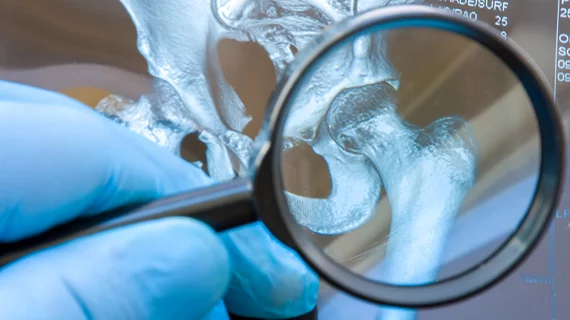Orthopedic trauma reads a 'significant difficulty' for radiology residents
Many radiology residents display “significant difficulty” interpreting orthopedic trauma cases, a new analysis suggests.
A paper published in Emergency Radiology details how a group of radiology residents fared during a simulation exercise that assesses their preparedness for independent radiology call, where orthopedic trauma cases are common. The analysis revealed that 80% of the residents evaluated were guilty of “critical errors” in their reports on the cases, prompting concern regarding orthopedic-specific training provided to emerging radiologists.
For the analysis, researchers challenged 321 radiology residents to evaluate 65 simulated cases of 3 specific types of orthopedic traumas—sacral ala, femoral neck and pediatric tibial/toddler’s fractures. Using the Wisdom in Diagnostic Imaging Emergent/Critical Care Radiology Simulation, the team graded residents’ responses and categorized their errors as either observational (failing to identify key findings) or interpretive (incorrect conclusions despite correct identification of findings).
Residents struggled the most with cases of sacral ala fractures on radiographs, achieving scores of just 1.29 out of 10, with the majority of errors being observational in nature. For these cases, just 6% of participants produced effective reports, while 80% made critical errors.
Scores only minimally improved for the other two types of fractures included in the assessment. For femoral neck fractures on CT images, the group’s average score was 2.78 out of 10, with the majority of point deductions again lost to observational errors. Effective reports were generated by 25% of the residents, while 66% made critical errors. Pediatric tibial/toddler’s fractures also garnered similar results, with an average score of 2.94; for these cases, 29% generated effective reports and 71% made critical errors.
The findings are concerning, especially considering most residents take call shifts during their training, the authors cautioned, adding that more needs to be done to ensure students are adequately exposed to cases they may see during call.
“Radiology residents demonstrated significant difficulty in identifying these orthopedic trauma cases, with errors primarily attributed to observational deficiencies,” John Ramos Rivas, MD, with the University of Florida, Gainesville, and colleagues cautioned. “These findings suggest a need for targeted educational interventions in radiology residency programs to improve the identification of these fractures.”
It is estimated that 66 million orthopedic injuries requiring medical attention occur in the United States every year. Of the injuries that are treated in emergency departments, the American Academy of Orthopedic Surgeons estimates that up to one-third of these cases are misdiagnosed.

